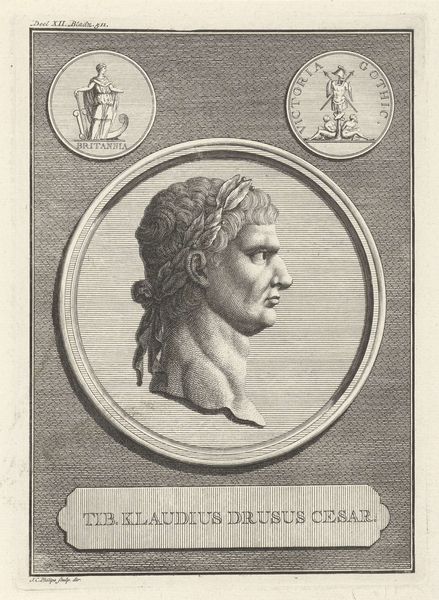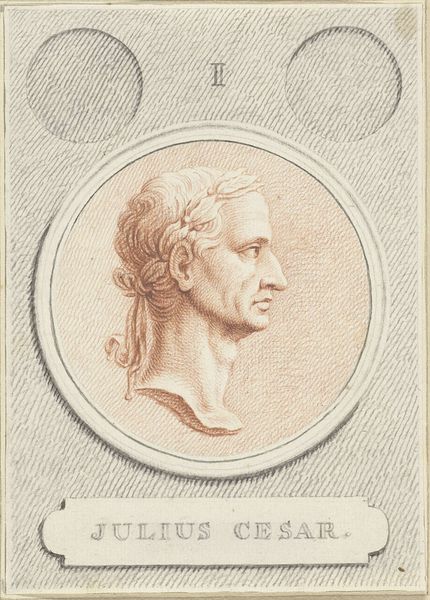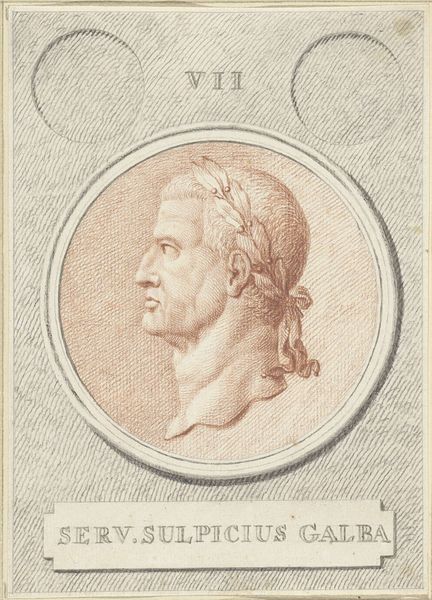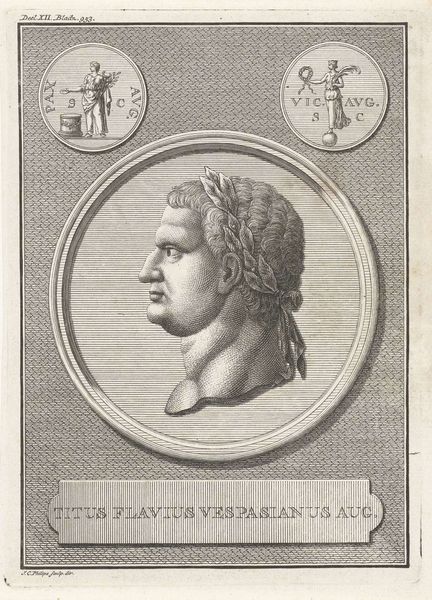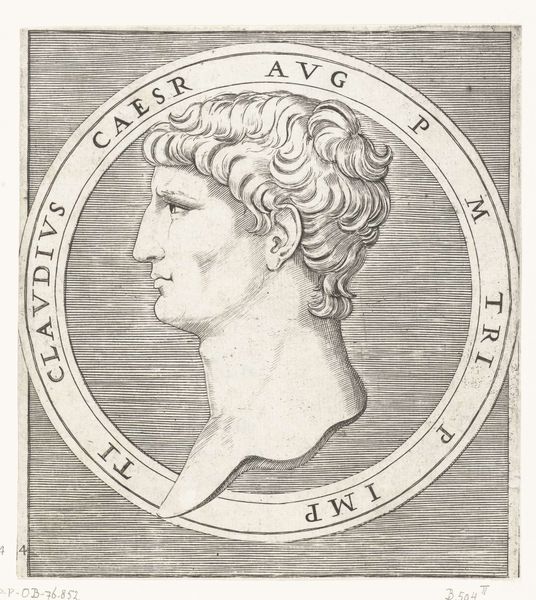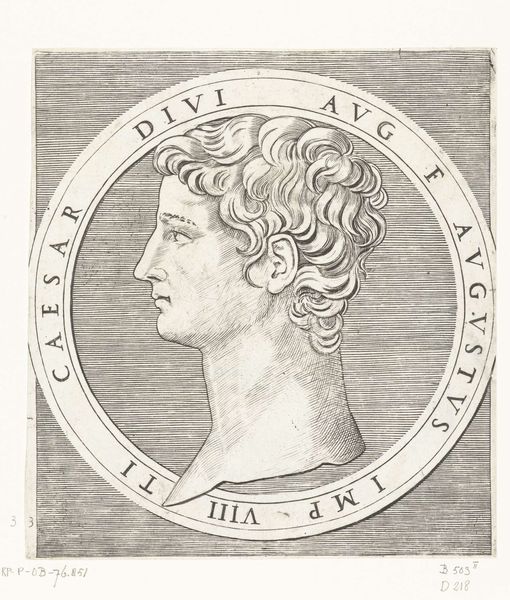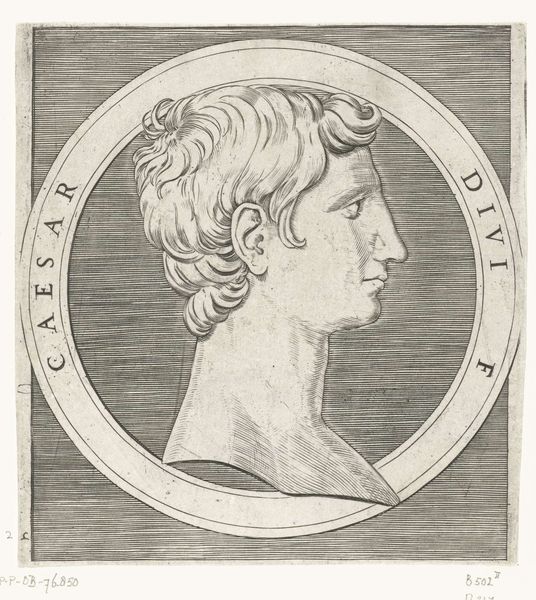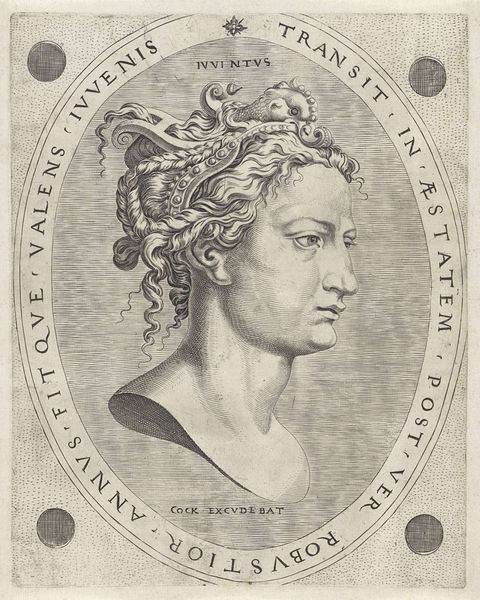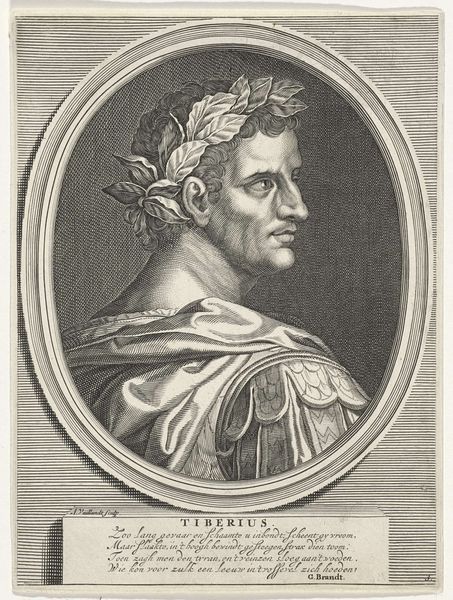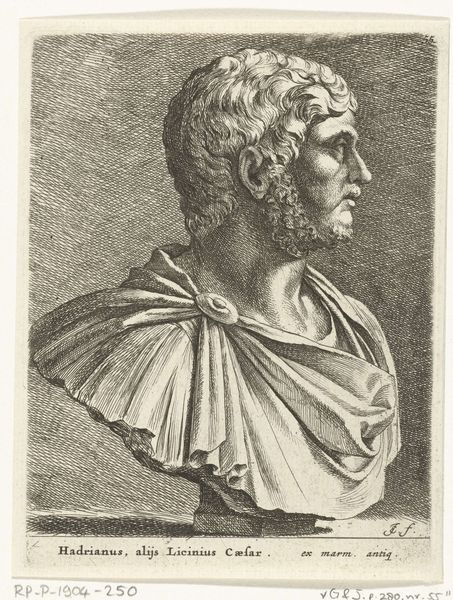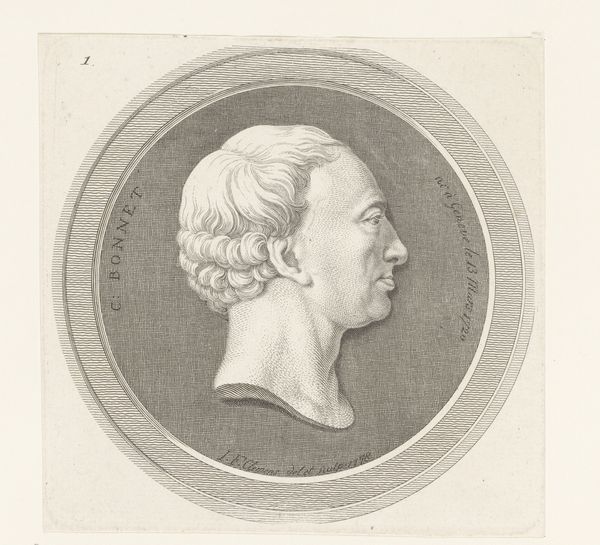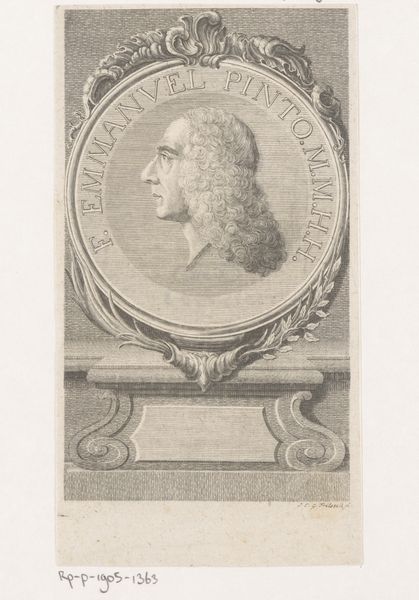
Dimensions: height 182 mm, width 130 mm
Copyright: Rijks Museum: Open Domain
Editor: Here we have a print from 1746 by Jan Caspar Philips, titled "Portret van Tiberius Gemellus." It's an engraving, and the fine lines give it an almost coin-like appearance. What stands out to me is the framing, the way the central portrait is presented within these coin-like circles and textures. What catches your eye? Curator: I think it is key to acknowledge how this print operates within the political landscape of imagery. Consider the act of creating and disseminating images of rulers, even those long deceased. What purpose might that serve in 18th-century Europe? Editor: Hmm, to connect current rulers with the perceived glory of the Roman Empire? To legitimize their power? Curator: Exactly! Neoclassicism wasn't merely an aesthetic preference; it was a carefully constructed visual language designed to evoke authority and a sense of continuity with a powerful past. Even the very act of creating reproducible images, like this print, broadens its reach and amplifies its political effect, no? Editor: That's fascinating. I hadn't considered the dissemination aspect. Does the choice of Tiberius Gemellus specifically carry any weight, beyond him being Roman? Curator: Good question. While not the most prominent Roman figure, his image contributes to the broader narrative of Roman authority. And the print is presented within a series – what do you imagine the impact would have been by being one of many historical portraits like this, circulating in a book or as individual prints? Editor: Creating a cumulative effect of historical validation, I suppose. I see how this artwork functions on multiple levels now. Curator: Precisely! Thinking about art in terms of its social function opens up whole new avenues for interpretation. Editor: I will certainly keep that in mind! Thanks, that really gave me a new understanding of this piece.
Comments
No comments
Be the first to comment and join the conversation on the ultimate creative platform.
